Navigating the Modern Landscape of Healing
The journey to finding the right therapy is no longer about choosing a single, named modality from a static list. It has evolved into an act of informed self-discovery, a process that can lead to a personalized, integrated path to wellness. The most profound and lasting healing often emerges from a synthesis of approaches—one that honors your philosophical orientation, addresses your specific symptoms, respects your body’s wisdom, and supports your brain’s biology. This article will serve as your expert guide and personal inventory for that journey.
This report is structured in three parts. Part I is a guided self-inventory designed to help you map your internal world. This process will create a personal profile that helps you identify which therapeutic approaches might resonate most deeply with your unique experience. Part II provides a detailed comparison of major therapeutic frameworks, connecting their philosophies and methods back to the insights gained from your self-inventory. Finally, Part III presents a cutting-edge model for how these diverse approaches, from depth psychology to neurobiology, can be woven together into a comprehensive, interdisciplinary tapestry of care. This section will use practical examples, including services available in Alabama and via teletherapy, to illustrate how a multi-layered treatment plan can be constructed to address the whole person.
Part I: Your Personal Inventory – Charting Your Inner Landscape
This inventory is designed to be phenomenological, not diagnostic. It is a tool for exploring your subjective experience, reflecting a modern paradigm shift away from a purely prescriptive, pathology-focused model toward a collaborative, client-empowered one. The questions are crafted to elicit the nature of your distress, aligning with the non-pathologizing stances of many contemporary and depth-oriented psychotherapies.1 By engaging in this structured self-reflection, you become an expert on your own inner system, a foundational step toward taking personal responsibility for your healing and developing effective self-leadership.4
Your Presenting Concerns: The “What” and “How” of Your Struggle
The first step is to differentiate the nature and manifestation of your primary distress. Understanding where and how your struggle shows up can provide crucial clues about the most effective starting point for therapy.
Consider the following questions:
- Is your primary distress centered on specific, disruptive symptoms, or is it a more pervasive sense of unease? For example, are you dealing with tangible issues like panic attacks, compulsive behaviors, intense and rapid emotional swings, or intrusive memories of past events? This focus on specific symptoms may suggest a good fit for skills-based or trauma-processing therapies designed to provide practical tools and reduce immediate distress.6 Alternatively, is your struggle a more pervasive sense of purposelessness, emptiness, alienation, or a deep-seated anxiety about life’s fundamental questions, such as death, freedom, and meaning? This orientation points toward philosophical approaches that explore the human condition itself.2
- In which domain of your experience do you feel your struggle most acutely?
- Thoughts: Is your inner world dominated by negative beliefs about yourself, obsessive rumination, or a harsh inner critic?
- Emotions: Do you feel emotionally overwhelmed, numb and disconnected, or unable to manage the intensity of your reactions?
- Body: Do you experience chronic tension, unexplained physical pain, digestive issues, or a sense of being disconnected from your physical self (dissociation)?
- Relationships: Does your distress manifest primarily in interpersonal conflict, a feeling of profound isolation, or repeating unhealthy patterns with others?
Mapping your distress across these cognitive, emotional, somatic, and interpersonal domains will help clarify which therapeutic modalities might offer the most relevant tools and perspectives for your unique situation.
Your Personal Orientation: Worldview and Ways of Knowing
Effective therapy resonates with your natural way of understanding the world. Reflecting on your personal style of learning and meaning-making can help you identify a therapeutic relationship and methodology that feels like a natural fit.
- Are you drawn to exploring the deeper “why” behind your patterns, even if the path is long and complex? Do you find personal meaning in symbols, dreams, myths, and metaphors? An affirmative answer suggests an affinity for depth psychologies, such as Jungian therapy, which focus on the unconscious and the archetypal patterns that shape human experience.7
- Do you prefer a structured, educational approach that provides concrete skills and homework to practice? Is your primary goal to gain practical tools to manage crises and improve your day-to-day functioning? This preference indicates a potential match with behavioral therapies like Dialectical Behavior Therapy (DBT), which are designed to build specific competencies in emotional and interpersonal management.6
- Does it resonate with you to think of yourself not as a single, unified “me,” but as a system of different “parts” or “voices” that are sometimes in conflict? This perspective is the cornerstone of parts-based therapies like Internal Family Systems (IFS) and Voice Dialogue, which seek to foster internal harmony and understanding among these subpersonalities.3
- Do you feel that your issues are stored in your body and that “talk therapy” alone has not been able to reach them? Are you interested in a therapy that focuses on physical sensations, nervous system regulation, and releasing trapped survival energy? This points strongly toward body-based or somatic therapies, such as Somatic Experiencing.13
Your Therapeutic Goals: Defining “Healing” for Yourself
Clarifying your desired outcome is essential for charting a course. “Healing” can mean different things to different people, and your personal definition will guide the therapeutic process.
- What would “success” in therapy look like for you?
- Is it the reduction or elimination of specific symptoms, such as anxiety or depression?
- Is it achieving a profound sense of self-awareness and a clearer understanding of your place in the world? 2
- Is it fostering a state of inner harmony where all the different parts of you are acknowledged and working together collaboratively? 5
- Is it feeling safe, grounded, and regulated in your own body, free from the lingering physical and emotional effects of past trauma? 13
- Is your focus on healing from the past or building for the future? Are you seeking to process specific past events and integrate them into a coherent life story, so they no longer intrude on your present? This goal aligns with trauma-processing modalities like Lifespan Integration and EMDR.16 Or is your focus more on the present and future—on developing the skills and resilience needed to build a “life worth living” from this moment forward? This forward-looking orientation is a hallmark of therapies like DBT.9
With this personal inventory complete, you are now equipped with a clearer map of your inner landscape. This map will serve as a valuable reference as we explore the major therapeutic frameworks in the next section.
Part II: A Guide to Major Therapeutic Frameworks
The diverse world of psychotherapy can be organized along two key axes. The first is the axis of focus, which ranges from the existential and spiritual (exploring the “Why am I here?”) to the practical and behavioral (addressing the “How do I cope?”). The second is the axis of the primary locus of intervention, which spans from “top-down” approaches that work with thoughts, beliefs, and narratives to “bottom-up” approaches that target the body, the nervous system, and stored somatic memory. Understanding where a therapy falls on these spectrums can help you align its methods with your needs.
The Search for Meaning & Wholeness (Depth-Oriented)
These approaches are primarily “top-down” and focus on the “why” of human suffering. They are less concerned with immediate symptom reduction and more invested in a deep, often long-term, exploration of the self to foster profound awareness and integration.
Existential Psychotherapy
- Core Philosophy: Existential psychotherapy is, first and foremost, a philosophical approach concerned with clarifying what it means to be alive.1 It operates from the premise that much of human psychological distress stems from our confrontation with the fundamental givens of existence, or “ultimate concerns“: death, isolation, freedom (and its attendant responsibility), and meaninglessness.4 This therapy reframes experiences like anxiety, despair, and loneliness not as pathological symptoms to be eliminated, but as normal, unavoidable parts of the human condition that can serve as catalysts for growth.2 It emphasizes free will, personal choice, and the individual’s capacity to create meaning and purpose even in the face of suffering.2 The therapeutic relationship is an open, non-judgmental dialogue aimed at increasing self-awareness and helping the client live more authentically.1
- Ideal Client Profile: This approach is a strong fit if your personal inventory revealed a preoccupation with existential questions, a feeling of emptiness or purposelessness, or a desire to increase self-awareness and take responsibility for your life’s direction. You are likely someone who is comfortable with ambiguity and philosophical questioning and is seeking a deeper understanding of yourself and your place in the world rather than a quick fix for specific symptoms.2
Jungian Therapy (Analytical Psychology)
- Core Philosophy: Developed by Carl Jung, this holistic approach aims to facilitate a dialogue between the conscious and unconscious parts of the mind to achieve “individuation”—the lifelong process of becoming one’s true, whole, and unique self.7 Jungian theory posits that the unconscious is not merely a repository of repressed memories but also a source of wisdom and creativity. It includes the “personal unconscious” and the “collective unconscious,” a universal layer shared by all humanity containing archetypes—innate, universal prototypes for ideas and experiences.8 Key archetypes explored in therapy include the Persona (the social mask we present to the world), the Shadow (the repressed, darker aspects of our psyche), and the Anima/Animus (the contrasexual aspects within us).8 The goal is to confront and integrate these elements, leading to profound personal growth and transformation.8
- Key Techniques: Jungian analysis employs several distinct techniques to explore the unconscious, including dream analysis to uncover symbolic meanings, active imagination to consciously dialogue with inner figures, and the use of creative expression like art and writing.7 The therapeutic process often follows four stages: Confession, Elucidation, Education, and Transformation.18
- Ideal Client Profile: Jungian therapy is well-suited for individuals with a rich inner world who are drawn to exploring dreams, symbols, myths, and spirituality.7 It is a good fit if your inventory pointed to a desire for profound self-exploration, a goal of integrating conflicting parts of your personality, and a willingness to engage in a long-term therapeutic process to uncover the deeper, archetypal patterns underlying your personal struggles.7
The Body and the Skills (Somatic & Behavioral)
These approaches are more focused on the “how” of managing distress. One operates from the “bottom-up,” targeting the body’s physiological responses, while the other provides “top-down” cognitive and behavioral skills for practical application.
Somatic Experiencing (SE)
- Core Philosophy: Somatic Experiencing is a pioneering “bottom-up” approach developed by Dr. Peter Levine, based on the principle that trauma is not an event but a physiological response stored in the body and the autonomic nervous system (ANS).13 When a traumatic event occurs, the immense survival energy mobilized for fight, flight, or freeze responses can become “stuck” or “frozen” if the organism is unable to complete the self-protective action. SE facilitates the gentle release of this stored energy, allowing the nervous system to return to a state of regulation and equilibrium.13 The core tenet is that the body holds the key to resolution and possesses an innate capacity to heal.13
- Key Techniques: SE is characterized by its gentle and gradual methodology. It utilizes titration, the process of touching upon small, manageable amounts of traumatic arousal and then returning to a state of safety and resource, to prevent re-traumatization.14 It also employs pendulation, the natural rhythm of moving between states of expansion (ease, resource) and contraction (distress, activation), which builds nervous system resilience.14 The therapist guides the client in tracking internal bodily sensations (interoception), such as tightness, warmth, or trembling, to help the body process and discharge the stored survival energy.13
- Ideal Client Profile: SE is a strong fit if your inventory highlighted somatic symptoms (chronic pain, tension, digestive issues), a feeling of being disconnected from your body, hypervigilance, dissociation, or a history of trauma where traditional talk therapy has been insufficient. Your primary goal is to feel safe and at home in your body, increase your “window of tolerance” for stress, and restore a sense of agency and regulation.13
Dialectical Behavior Therapy (DBT)
- Core Philosophy: Developed by Dr. Marsha Linehan, DBT is a highly structured, evidence-based therapy originally designed for individuals with borderline personality disorder (BPD) and chronic suicidality, but now used for a wide range of issues involving emotional dysregulation.6 The core of DBT is the “dialectic” between acceptance and change.9 It teaches that one must first accept oneself, one’s emotions, and one’s reality without judgment before effective change can occur. The therapy is premised on the idea that many psychological problems stem from a deficit of skills in managing intense emotions and navigating interpersonal situations.6
- Key Techniques: DBT is intensely practical and skills-based. A comprehensive DBT program typically involves four components: weekly individual therapy, a weekly skills training group, phone coaching for in-the-moment crisis management, and a therapist consultation team.20 The curriculum is organized into four core skills modules:
- Mindfulness: The foundational skill, teaching how to observe, describe, and participate in the present moment non-judgmentally.6
- Distress Tolerance: Provides concrete strategies for surviving crises and accepting reality without making things worse.9
- Emotion Regulation: Teaches how to understand, label, and change intense emotional responses.22
- Interpersonal Effectiveness: Offers skills for asking for what one needs, saying no, and managing conflict while maintaining relationships and self-respect.6
- Ideal Client Profile: DBT is an excellent choice if your inventory revealed a primary struggle with intense emotional dysregulation, impulsive or self-destructive behaviors, chaotic relationships, or a feeling of being constantly in crisis. You are looking for a practical, educational approach with clear structure, homework, and concrete tools to build a “life worth living,” and your focus is on changing present and future behavior rather than deep exploration of the past.9
The Inner Community (Parts-Based)
These therapies offer an integrative bridge between “top-down” and “bottom-up” approaches. They view the psyche not as a monolithic entity but as a “non-pathological multiplicity”—an internal system of subpersonalities, “parts,” or “voices”.3 The therapeutic goal is not to eliminate unwanted parts but to understand their positive intentions, heal their underlying wounds, and foster a state of internal harmony and collaborative leadership.
Modalities and Core Philosophy
- Internal Family Systems (IFS): Developed by Dr. Richard Schwartz, IFS provides a clear and compassionate map of the inner world. It categorizes parts into three primary groups: Managers, who are proactive protectors trying to keep the system safe and functional; Firefighters, who are reactive protectors that jump into action to douse emotional pain, often through impulsive or addictive behaviors; and Exiles, who are the young, vulnerable parts that hold the pain and trauma from past experiences.3 IFS posits that every person also has a core Self, which is inherently calm, curious, compassionate, confident, courageous, creative, and connected (the “8 Cs”).5 Healing occurs when the Self is able to connect with, witness, and “unburden” the extreme beliefs and emotions carried by the parts, allowing them to return to their natural, valuable states.5
- Voice Dialogue: Developed by Drs. Hal and Sidra Stone, this method facilitates direct dialogue with the various “selves” or “voices” within the psyche.11 It distinguishes between powerful “primary selves” (the dominant parts we identify with, like the Pusher or the Pleaser) and their opposite “disowned selves” (the parts we have suppressed, like vulnerability or anger).11 The therapist acts as a facilitator, inviting different selves to speak, honoring each one’s perspective without judgment.11 The ultimate goal is to develop an “Aware Ego,” a central consciousness that can hold awareness of all the selves without being identified with any single one, thereby increasing choice and reducing automatic, unconscious behavior.12
- Process Oriented Psychotherapy (Process Work): Founded by Dr. Arnold Mindell, this approach is rooted in Jungian psychology, Taoism, and physics.26 It is less a set of techniques and more a way of “following the process” of a person’s experience. It views symptoms, dreams, body sensations, relationship conflicts, and even social issues as meaningful expressions of the unconscious trying to emerge into awareness.26 The therapist’s role is to help the client notice and “amplify” these subtle signals, allowing the underlying wisdom to unfold and integrate, rather than trying to eliminate the “problem”.26
Ideal Client Profile
Parts-based therapies are an excellent fit if you experience significant internal conflict, such as a harsh inner critic battling a more vulnerable part, or if you often feel like “a part of me wants to do this, but another part of me wants to do that.” This framework resonates with individuals seeking a compassionate, non-pathologizing way to understand their inner complexity. It is particularly powerful for those who want to move beyond self-criticism and develop a more collaborative and loving relationship with all aspects of themselves.
Table 1: At-a-Glance Comparison of Therapeutic Frameworks
| Modality | Core Philosophy | Primary Goals | Key Techniques | “You Might Be a Good Fit If…” |
| Existential Psychotherapy | A philosophical approach focused on finding meaning and authenticity by confronting life’s “ultimate concerns” (death, freedom, isolation, meaninglessness).1 | Increase self-awareness; find meaning and purpose; take responsibility for one’s life and choices; live more authentically.2 | Open dialogue, philosophical questioning, mindfulness, reframing anxiety as a normal part of life.2 | …you are grappling with questions of meaning, purpose, and freedom, and seek self-awareness over symptom removal. |
| Jungian Therapy | A depth psychology aimed at integrating conscious and unconscious aspects of the psyche to achieve wholeness (“individuation”) through engagement with archetypes and symbols.7 | Individuation; integration of the Shadow, Anima/Animus; deepen self-knowledge; find a deeper sense of purpose.7 | Dream analysis, active imagination, symbolic art, exploration of myths and archetypal patterns.7 | …you have a rich inner life, are interested in dreams and symbols, and seek profound self-exploration and transformation. |
| Somatic Experiencing (SE) | A body-based (“bottom-up”) approach that posits trauma is stored in the nervous system. Healing involves gently releasing this trapped survival energy.13 | Restore nervous system regulation; increase the “window of tolerance”; release stored trauma from the body; improve mind-body connection.13 | Titration (small doses of distress), pendulation (moving between distress and safety), tracking bodily sensations.14 | …you feel your issues are “stuck” in your body, experience somatic symptoms, or find talk therapy insufficient for trauma. |
| Parts-Based Therapies (IFS, Voice Dialogue, etc.) | The mind is a natural multiplicity of “parts” or “selves.” The goal is to understand and harmonize these parts, fostering internal compassion and self-leadership.3 | Heal wounded parts (“Exiles”); foster internal harmony; develop a compassionate, curious “Self” or “Aware Ego” to lead the inner system.5 | Identifying and dialoguing with parts; unburdening trauma; creating an “inner map” of the psyche.11 | …you experience significant internal conflict, self-criticism, or feel like different “parts” of you are at war with each other. |
| Dialectical Behavior Therapy (DBT) | A structured, skills-based therapy balancing acceptance and change. Assumes problems arise from a deficit in emotional and interpersonal skills.6 | Reduce self-destructive behaviors; learn practical skills for managing emotions, tolerating distress, and improving relationships; build a “life worth living”.6 | Skills training in Mindfulness, Distress Tolerance, Emotion Regulation, and Interpersonal Effectiveness; diary cards; phone coaching.19 | …you struggle with intense emotional dysregulation, impulsivity, or chaotic relationships and want a practical, structured, educational approach. |
Part III: The Integrated Frontier – A Holistic Path to Wellness
The future of effective mental healthcare lies not in allegiance to a single modality, but in a sophisticated, multi-layered approach that addresses the whole person: mind, body, and brain. Biological interventions like nutritional support and neuromodulation can create a more stable and receptive physiological foundation, making the “software” of psychotherapy run more effectively. This movement toward personalized, biologically-informed mental health represents a significant advancement in the field.
The Biological Foundation: Supporting the Brain and Body
Before effective psychological work can take place, the brain’s biological hardware must be adequately supported. This involves understanding its function, directly modulating its activity when necessary, and providing it with the essential biochemical fuel it needs to operate.
QEEG Brain Mapping: The Diagnostic Blueprint
- What It Is: Quantitative Electroencephalography (QEEG) is a non-invasive diagnostic tool that measures the electrical activity of the brain in the form of brainwave patterns.28 During a QEEG session, sensors are placed on the scalp to record brainwaves while the individual is at rest and, at times, while engaged in specific tasks.29 This data is then analyzed and compared to normative databases to create a visual “brain map”.28
- Role in Integration: A brain map provides objective, biological data that can guide and personalize treatment.28 It moves beyond subjective symptom reporting to identify specific patterns of brain dysregulation—such as areas of hyperactivity or underactivity—that are linked to conditions like ADHD, anxiety, depression, and PTSD.29 For example, a map might reveal underactivity in the prefrontal cortex related to focus issues in ADHD, or overactivity in the brain’s fear circuits related to anxiety.29 This precise information allows clinicians to target interventions like neurofeedback or transcranial magnetic stimulation to the specific neural circuits that need support, making therapy more efficient and effective.28
Neuromodulation: The Circuit Reset
- What It Is: Neuromodulation is a class of treatments that use electrical or magnetic currents to directly influence and modulate brain activity.31 These therapies are particularly valuable for treatment-resistant conditions where psychotherapy and medication have not been sufficient.33 Key forms include:
- Repetitive Transcranial Magnetic Stimulation (rTMS): A non-invasive procedure where an electromagnetic coil is placed against the scalp to deliver magnetic pulses that stimulate nerve cells in specific brain regions, such as the prefrontal cortex, which is involved in mood regulation.35 It is FDA-approved for major depressive disorder and OCD.37 Patient experiences often describe it as life-changing, capable of lifting a persistent “cloud of depression” and making them feel like themselves again.38
- Vagus Nerve Stimulation (VNS): This typically involves the surgical implantation of a pacemaker-like device that sends regular, mild electrical pulses to the brain via the vagus nerve.41 It is FDA-approved as an adjunctive therapy for treatment-resistant depression.43
- Deep Brain Stimulation (DBS): An invasive surgical procedure where electrodes are implanted deep within specific brain areas. These electrodes are connected to a pulse generator in the chest, delivering continuous electrical impulses to regulate abnormal brain activity.44 It is FDA-approved for severe OCD and is being studied for treatment-resistant depression.44
- Role in Integration: For individuals stuck in severe, persistent states of depression, anxiety, or obsession, neuromodulation can act as a powerful “reset” for dysfunctional brain circuits.46 This biological intervention can create a crucial shift in brain function, reducing symptom severity to a point where an individual becomes more receptive and able to meaningfully engage in and benefit from psychotherapy.48 Combining neuromodulation with therapy can create a synergistic effect, where the brain is biologically primed for the psychological changes facilitated in therapy sessions.34
Hardy Nutritionals Micronutrition: The Biochemical Fuel
- What It Is: Hardy Nutritionals’ Daily Essential Nutrients is a clinical-strength, broad-spectrum micronutrient formulation containing a comprehensive array of essential vitamins and minerals in highly absorbable forms.50 Its efficacy for improving mood, reducing anxiety, and enhancing focus is supported by over 40 independent, peer-reviewed medical journal publications, including randomized controlled trials.50
- Role in Integration: The brain is a biological organ with immense metabolic demands. Optimal neurological function, including the synthesis of neurotransmitters and the regulation of mood, depends on a consistent supply of essential micronutrients.52 For many individuals, psychological symptoms may be caused or exacerbated by underlying nutritional deficiencies. Providing the brain with these fundamental biochemical building blocks can act as a powerful foundational support for all other therapeutic interventions.53 It ensures the brain has the resources it needs to self-regulate and respond effectively to both psychotherapy and neuromodulation. It can serve as a safe and effective alternative or complement to psychiatric medication, often allowing for medication reduction under clinical supervision.52
Weaving Your Therapeutic Tapestry: A Model for Interdisciplinary Care
The diverse modalities discussed are not competing options but complementary tools that can be thoughtfully layered into a sophisticated, phased treatment plan. The availability of many of these specialized services in Alabama, both in-person and via telehealth, provides a practical case study for how such an integrated approach can be implemented. A logical and clinically sound sequence for trauma treatment often follows three phases: 1) Stabilization and Resourcing, 2) Trauma Processing, and 3) Integration and Growth. A person cannot safely process deep trauma if their nervous system is highly dysregulated, and after processing, they need tools to integrate the changes into a new, coherent sense of self.
A Multi-Layered Trauma Protocol in Practice (An Alabama Case Study)
Imagine a resident of a rural area in Alabama struggling with complex trauma, anxiety, and emotional dysregulation. An integrated treatment plan could unfold as follows:
Phase 1: Building Safety and Regulation
- Foundation: The journey begins with establishing access and safety. The client connects with a specialized practice like Taproot Therapy Collective via Teletherapy for Trauma Anywhere in Alabama, overcoming geographical barriers.53 This is crucial, as Alabama has specific regulations governing teletherapy to ensure client safety and confidentiality, including requirements for licensure, informed consent, and the use of HIPAA-compliant platforms.57
- Bottom-Up Regulation: The initial therapeutic focus is on stabilizing the nervous system. The therapist, trained in Somatic Experiencing (SE), guides the client in tracking bodily sensations to gently increase their “window of tolerance” for distressing feelings.13 They may use Somatic Trauma Mapping to create a personalized visual representation of how trauma is held in the client’s body, guiding the treatment.60 This work can be done effectively via telehealth with a trained practitioner.61
- Top-Down Skills: Simultaneously, the client needs practical tools for crisis management. They are referred to a Dialectical Behavior Therapy (DBT) skills group, perhaps virtually through a provider like The Wise Center in Birmingham.63 Here, they learn concrete Distress Tolerance and Mindfulness skills to manage overwhelming emotions and stay grounded between sessions.6
- Biochemical Support: The client also begins a regimen of Hardy Micronutrition (Daily Essential Nutrients) to ensure their brain has the biochemical foundation for improved mood stability and emotional regulation.50
Phase 2: Processing Traumatic Memories
- Targeted Processing: Once the client has developed greater nervous system regulation and coping skills, they are ready to process the traumatic memories that are at the root of their symptoms. This work requires specialized, evidence-based modalities available from therapists throughout Alabama.64
- Neurobiological Approaches: The client and therapist might choose EMDR (Eye Movement Desensitization and Reprocessing) for Trauma in Alabama.65 This structured, eight-phase therapy uses bilateral stimulation (such as eye movements) to help the brain’s information processing system “digest” and store traumatic memories in a more adaptive way, reducing their emotional charge.68
- Alternatively, they could use Brainspotting Therapy for Trauma, which is based on the principle that “where you look affects how you feel”.70 By identifying a relevant eye position or “Brainspot,” the therapist helps the client access and process unprocessed trauma held deep in the subcortical brain, often with less verbal recounting than other methods.72
- Narrative and Sensory Integration: To weave these processed experiences into a coherent whole, the therapist might use Lifespan Integration Therapy in Alabama.16 By repeatedly guiding the client through a timeline of their life’s memories, this gentle, body-based therapy proves to the client’s entire mind-body system that the past is over and they are safe in the present.16 For particularly intense emotional states, Emotional Transformation Therapy (ETT) could be used. This modality employs precise visual sensory stimulation, such as specific wavelengths of light and color, to rapidly process and transform distressing emotions.76
Phase 3: Integration and Creating a Life of Meaning
- Internal Harmony: As the heavy burden of trauma is processed and released, fragmented parts of the self, which developed as coping mechanisms, can begin to surface. This is the ideal time to introduce Parts Based Therapy in Alabama.53 Using an IFS-informed approach, the therapist helps the client connect with these parts from a place of Self-energy (curiosity and compassion), understand their protective roles, and heal the underlying wounds they carry, fostering internal collaboration and harmony.3
- Depth and Purpose: With greater internal stability and freedom from the past, the client is now able to engage with deeper, more expansive questions. They may begin working with a Jungian Therapy or Existential Therapy practitioner, available from specialists in Alabama, some of whom offer teletherapy.77 This phase of therapy focuses on exploring archetypal patterns, integrating the shadow, and consciously creating a life aligned with one’s authentic values and purpose.2
- Lifelong Practice: Meditation & Mindfulness, which began as a clinical skill learned in DBT, now transitions into a sustained, personal practice. It becomes a tool not just for managing distress, but for cultivating presence, insight, and continued personal and spiritual growth, reinforcing the gains made across all phases of therapy.7
This comprehensive, integrated model demonstrates how a diverse array of therapeutic tools can be synergistically combined to create a truly holistic and personalized path to healing, accessible even to those outside major metropolitan centers through the thoughtful use of teletherapy.
Becoming the Architect of Your Own Healing
The most effective path to healing is a collaborative one, built on a foundation of self-knowledge and tailored to your unique biopsychosocial makeup. The era of seeking a single, one-size-fits-all “cure” is giving way to a more nuanced understanding of wellness as a dynamic process of integration. This guide has offered a map and a compass—a framework for understanding your own needs and the therapeutic landscape available to meet them.
The next step is to use this knowledge to engage in an informed dialogue with a potential therapist. You are now better equipped to ask targeted questions, articulate your needs and goals, and co-create a treatment plan that resonates with every level of your being—from your brain’s neurochemistry to your body’s felt sense to your deepest search for meaning. Finding the “best” kind of therapy is not about discovering a single, perfect modality; it is about courageously embarking on a process of integration that honors the complexity, wisdom, and profound healing capacity of your own being.
Bibliography
https://nspc.org.uk/about-the-school/the-existential-approach/
https://www.verywellhealth.com/existential-theory-5272172
https://www.psychologytoday.com/us/therapy-types/existential-therapy
https://mindfulcenter.org/jungian/
https://meridianuniversity.edu/content/jungian-therapy-rewriting-your-lifes-script-for-the-better
https://positivepsychology.com/jungian-psychology/
https://dralanjacobson.com/somatic-therapy/
https://balancedawakening.com/blog/exercises-and-examples-of-somatic-experiencing-therapy
https://en.wikipedia.org/wiki/Internal_Family_Systems_Model
https://silversparrowcards.com/blogs/news/the-ultimate-guide-to-internal-family-systems
https://positivepsychology.com/internal-family-systems-therapy/
https://voicedialogueinternational.com/articles/Voice_Dialogue.pdf
https://www.sojourncounselling.com/process-oriented-psychotherapy
Exploring Process-Oriented Therapy: A Deep Dive into Long-Term Healing
https://www.mcleanhospital.org/dbt-strategies
https://www.mind.org.uk/information-support/drugs-and-treatments/talking-therapy-and-counselling/dialectical-behaviour-therapy-dbt/
https://www.apa.org/ptsd-guideline/treatments/eye-movement-reprocessing
Brainspotting Therapy: Improving Performance, Recovery, and Mental Health
https://www.blueprint.ai/blog/brainspotting-therapy-a-clinicians-guide-to-integrating-neuroexperiential-healing-into-practice
https://www.healthline.com/health/brainspotting-therapy
Lifespan Integration Therapy: A Comprehensive Guide to Timeline-Based Healing
https://bellevuechristiancounseling.com/articles/understanding-lifespan-integration-therapy
https://eudaimoniatx.com/blog/what-is-ett-emotional-transformation-therapy-explained
https://medicine.umich.edu/dept/psychiatry/programs/neuromodulation
https://www.goodreads.com/book/show/21413263-dbt-skills-training
https://cursosdepsicologia.com.ar/wp-content/uploads/2021/05/THEDIA1.pdf
https://www.guilford.com/books/DBT-Skills-Training-Manual/Marsha-Linehan/9781462556359
https://www.stonercounseling.com/blog/somatic-map
https://www.therapythewoodlands.com/post/unlocking-the-power-of-qeeg-brain-mapping-what-you-need-to-know
Combining Neurofeedback with Traditional Therapy: A Holistic Approach to Mental Health
https://www.sagebrushcounseling.com/blog/depth-psychology-somatic-healing









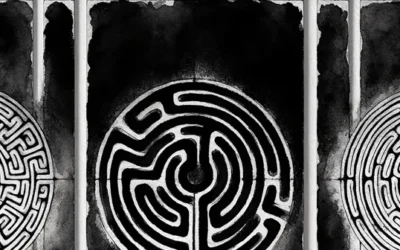





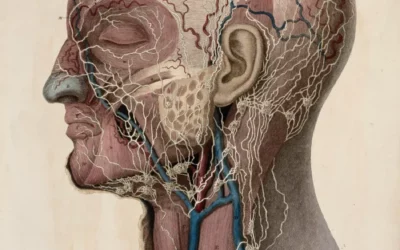


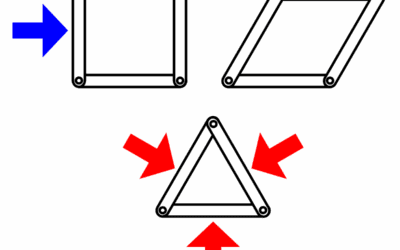
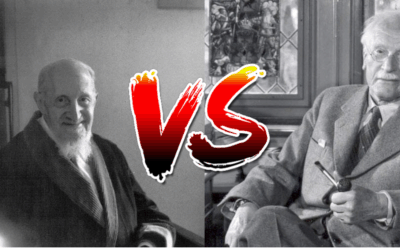




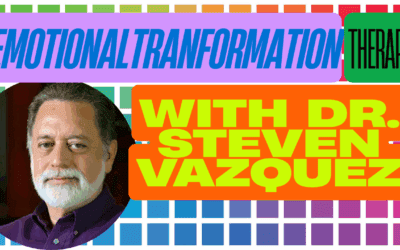


0 Comments